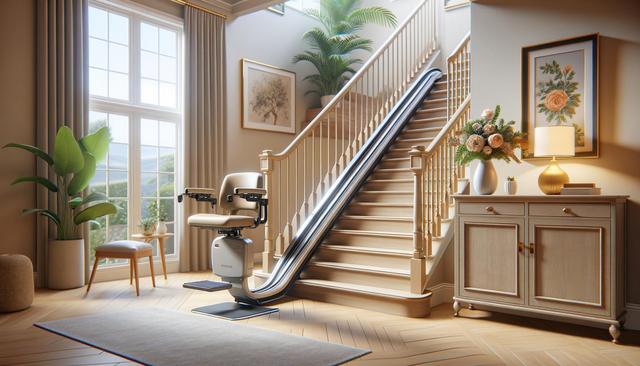Understanding the Role of Stair Lifts in Modern Homes
Stair lifts are motorized devices designed to help individuals move safely and comfortably up and down stairs. They are especially useful for seniors, people recovering from surgery, and those with limited mobility who prefer to remain in their homes rather than move to single-level living environments. By providing a reliable way to navigate staircases, stair lifts effectively reduce the risk of falls and injuries, which are common on stairs. This technology not only improves safety but also offers peace of mind for both users and their families.
More than just a convenience, stair lifts restore a sense of autonomy to those who might otherwise feel restricted by their living space. Whether installed on straight or curved staircases, these devices are built with safety features such as seat belts, swivel seats, and footrest sensors, ensuring secure operation. In many cases, stair lifts can be installed without major modifications to the home, making them an accessible option for a wide range of households.
Supporting Independent Living Through Accessibility
For many individuals, mobility challenges can lead to a loss of independence, especially in homes with multiple floors. Stair lifts provide a practical solution that enables users to access all areas of their home without assistance, preserving their personal freedom. This is particularly important for aging individuals who wish to age in place rather than relocate to assisted living facilities.
The ability to move freely within a home contributes significantly to emotional well-being and mental health. Stair lifts support this by enabling users to maintain their daily routines, such as accessing bedrooms, bathrooms, or laundry areas located on upper or lower floors. Here are some benefits of improved accessibility with stair lifts:
- Reduces physical strain and fatigue
- Promotes self-reliance and confidence
- Helps avoid the emotional stress of moving homes
- Improves quality of life for both users and caregivers
By removing the barrier of stairs, stair lifts play a key role in creating a more inclusive home environment.
Safety Features That Make a Difference
One of the primary concerns when it comes to stair use is safety. Stair lifts are designed with a variety of features that ensure secure and smooth operation. These features not only protect the user but also enhance the overall user experience. Common safety elements include:
- Seat belts for added security during transit
- Swivel seats that make it easier to get on and off safely
- Obstacle sensors that stop the lift if something blocks the path
- Battery backup systems for continued use during power outages
In addition to these features, stair lifts are operated with simple, user-friendly controls, often via a joystick or remote control. This ease of use makes them accessible to individuals with varying levels of dexterity and strength. Maintenance is also straightforward, with most models requiring only routine servicing to ensure long-term reliability.
For households with multiple users, some stair lifts offer programmable settings, allowing each person to customize the seat position and speed to their preference. These thoughtful design elements contribute to the overall safety and adaptability of the equipment.
Choosing the Right Stair Lift for Your Home
When selecting a stair lift, it’s important to consider the layout of your staircase, the user’s specific needs, and the available features. Stair lifts come in different models suited for straight stairs, curved stairs, and even outdoor steps. Each model is tailored to fit the structure of the staircase while maximizing comfort and functionality.
Factors to consider when choosing a stair lift include:
- Weight capacity and seat width
- Type of staircase (straight or curved)
- Indoor or outdoor installation
- Power source and battery backup options
- Additional features like folding rails or compact seats
Professional installation is highly recommended to ensure proper fit and safety. Installers can assess the home layout, explain the different options, and provide recommendations based on the user’s mobility level and daily needs. Many providers also offer maintenance plans to keep the lift in optimal condition over time.
By investing in a stair lift that suits your environment, you can significantly enhance the accessibility and comfort of your home without extensive remodeling.
Long-Term Value and Peace of Mind
While the initial cost of a stair lift may seem substantial, the long-term benefits often outweigh the expense. When compared to alternatives such as home renovations or moving to a single-level dwelling, stair lifts can be a more cost-effective solution. They allow individuals to stay in familiar surroundings, which is particularly valuable for those with strong emotional ties to their home.
The convenience and safety provided by stair lifts also reduce the potential for injuries, which can lead to expensive medical bills or extended recovery periods. Additionally, family members and caregivers often experience less stress, knowing their loved ones can safely navigate their living space independently.
Stair lifts also add functional value to a home. Should the need arise to sell or rent the property, having accessibility features in place can appeal to a wider range of potential occupants. Some stair lifts are even designed for easy removal, making them a flexible addition rather than a permanent change to the home’s structure.
Ultimately, a stair lift is more than just a mobility aid—it’s an investment in comfort, freedom, and well-being for those who need it most.




Leave a Reply